Clinical services guide
Medical abortion
This page is an accessible HTML version of the PDF shown below.
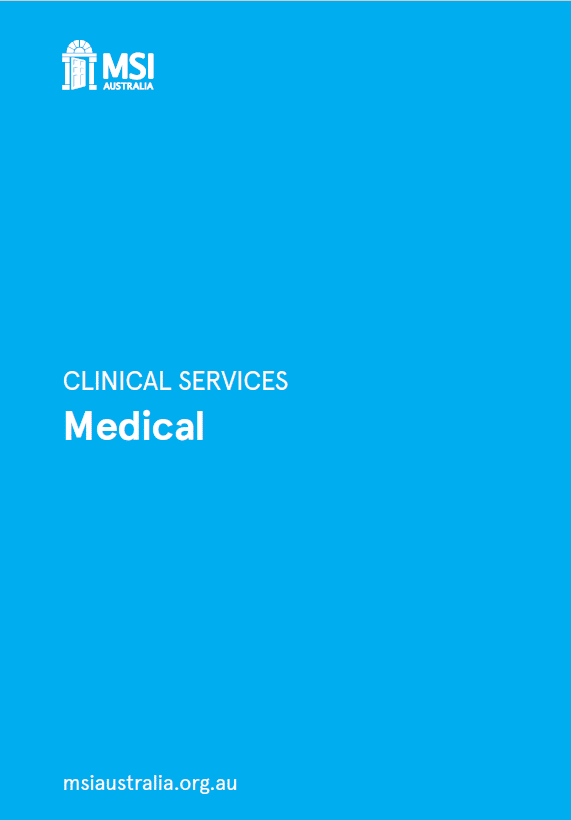
Clinical Services: Medical
PDF versions available: Clinical Services: Medical (ENG, PDF)
Ref code: 1721-MSIAU-240920
This booklet contains information about your medical abortion. Read this information carefully and keep it to look at later on. Ask us if you have any questions after reading it.
Things to know
Consent
- It is important that you understand the process, any risks, and that you are sure about your choice.
- Risks of medical abortion are described in the medical risks section.
- We will ask you to give your written consent to the process.
- It is important that you understand our fees and charges so you can give informed financial consent.
If you do not understand anything in this booklet, you have any questions, or if you feel that you’re being pressured or coerced, please let us know.
Interpreter services
Please let us know if you need a telephone interpreter to help you understand any of this information. If you need one at any time before or after your procedure, you can call: TIS National on 131 450 and ask to be connected to us on 1300 003 707.
Accessibility statement
An accessible text version of this document is available online at msiaustralia.org.au
Make a complaint or provide feedback
If you would like to provide any feedback, you can:
- talk to any staff member at the clinic
- write directly to the clinic
- call our National Contact Centre on 1300 003 707
- use our feedback form on the homepage of our website: msiaustralia.org.au
If we don’t satisfy your concerns, you may also escalate your complaint to the independent body in your State.
What is a medical abortion?
Medical abortion is a safe and effective method of ending an early pregnancy using medication (tablets) rather than surgery.
You must stay within 2 hours drive to 24-hour emergency medical care for the first 3 or 4 days of the process. You need to be able to access a doctor, hospital or one of our clinics until the process is complete.
Do not travel overseas until we have confirmed the abortion is complete.
While you are at the clinic
Expect to spend around 2 hours at the clinic
You will have an ultrasound to check how many weeks pregnant you are.
- We will not show you the ultrasound unless you ask to see it.
- We need to check that you are no more than 9 weeks (63 days) pregnant to go ahead with a medical abortion.
You will have a consultation with both a nurse and a doctor
The nurse will talk to you by yourself. They will ask you about your decision and whether you are sure. Your support person is then allowed to join you in the consultation.
- We will ask about your medical history and previous pregnancies.
- We will explain the treatment, as well as any risks.
- You can ask any questions you might have.
- We will discuss your contraceptive options and sexual health screening.
- Some contraceptive methods can be started immediately.
Sexual health screening
Unless you ask not to, we will screen you for sexually transmitted infections at your appointment. You can also choose to have a Cervical Screening Test (previously known as a Pap smear) at the same time.
- These tests are free.
- We will only contact you for positive or abnormal test results.
- You can ask for a copy of your results to go to your GP.
The 2 steps of a medical abortion
Medical abortion happens in 2 steps. You will take 2 different tablets that work together to end the pregnancy.
Step 1 (green box)
The first tablet you will take is an anti-hormone. It will stop the hormone that is needed for a pregnancy to grow.
- You will usually take the first tablet while you are at the clinic.
- This tablet is swallowed with water.
- Most people will not feel anything after taking this tablet, and can do their usual activities, however:
- you may have some light bleeding and mild cramps during this time
- you may have heavier bleeding, but this is not common.
If you are worried, you can call our free support line on 1300 888 022.
You will begin Step 2 when you are at home. You should choose a time when you can be at home resting for at least 6 hours, and when you can have a support person with you.
Step 2 (purple box)
The second tablets you will take are a prostaglandin. This will make your uterus cramp and will make your cervix relax so the pregnancy can pass.
- We will give you 4 tablets to take home with you. You can take them at any time within 24-48 hours of taking Step 1.
- If your pregnancy is more than 7 weeks, we recommend waiting until 36-48 hours after Step 1 as this may be more effective.
- Put all 4 tablets into the pouch of your mouth between your gum and cheek and keep them there. The tablets will go soft but may not completely dissolve; the medicine in the tablet will absorb through your cheek.
- After 30 minutes, you can swallow what is left in your mouth with some water.
The medicine packaging says to take Step 2 36-48 hours later, but we allow 24–48 hours as it gives you more choice of when to take the pills.
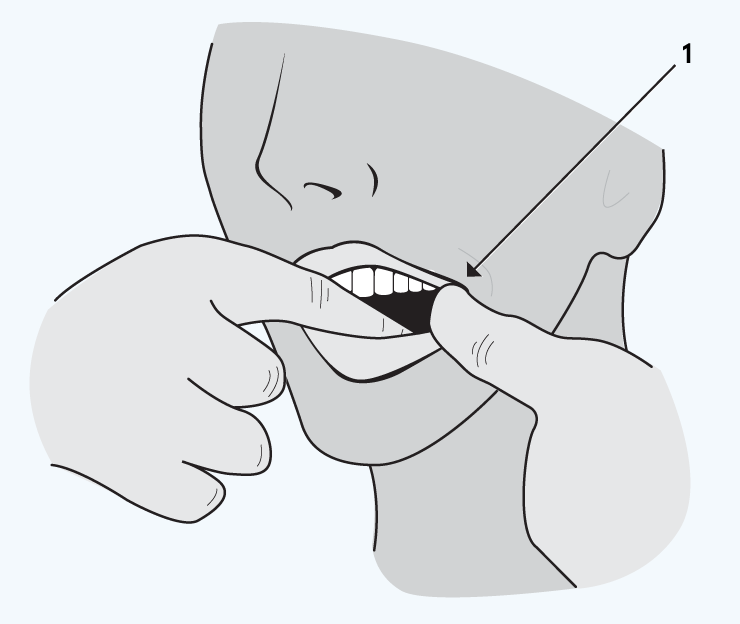
Illustration key:
- Tablets are absorbed through your cheek
Between 30 minutes and 24 hours after taking Step 2 (usually within 4-6 hours) you may have the following:
- cramps in your uterus
- bleeding from your vagina
- start to pass the pregnancy.
If you have not started bleeding within 24 hours, or have any concerns, please call our free support line on 1300 888 022.
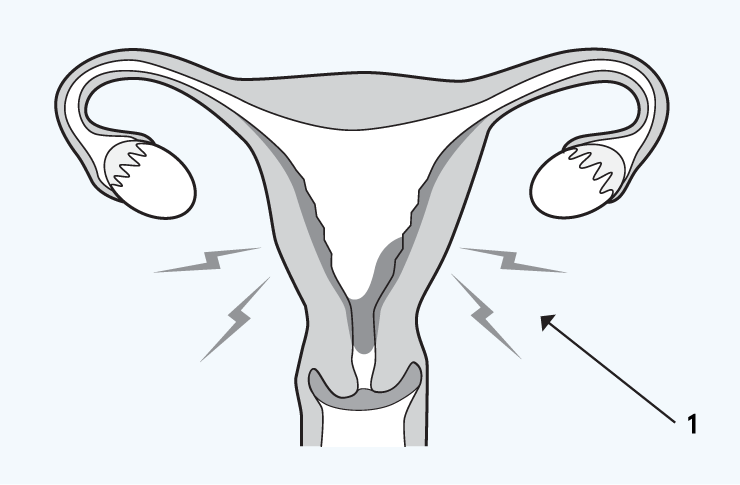
Illustration key:
- Cramps and bleeding.
If you do not want to continue with the medical abortion process at any stage please contact us on 1300 888 022, as there are potential risks to the fetus from the medication.
After your treatment
What to expect during your medical abortion
These are some symptoms you will probably experience during your medical abortion. If you experience any of the uncommon symptoms or are worried about anything you’re feeling, you can call our free support line on 1300 888 022.

Bleeding
- You may also pass some clots, which can be different sizes.
- You can expect to have some bleeding for around 2 weeks.
- You may have some light bleeding until your next period.
Call us if you experience very heavy bleeding, such as:
- soaking through a maxi-pad every 30 minutes for more than 2 hours
- passing clots larger than a tennis ball size
- heavy bleeding lasting more than 2 weeks.
Small amount (Small stain on maxipad within 1 hour)
Light amount (Less than 10cm stain on maxipad within 1 hour)
Average amount (Less than 15cm stain on maxipad within 1 hour)
Heavy amount (Saturated maxipad within 1 hour)

Abdominal pain
Pain in your abdomen (lower tummy) is normal and can range from mild to strong. Pain should get better after the pregnancy has passed. Strong cramping does not usually last longer than 24 hours. If you have pain in your abdomen, there are some tips in the pain management section of this book.
Call us if you have:
- strong cramping that does not get better with pain medication
- strong cramping for more than 24 hours
- concerns about your health.
Other side effects of medication
Step 1 can cause:
- headache
- breast tenderness
- fainting
- hot flushes
- itching and rash.
These side effects are not common, but if you do experience them, they are usually mild.
Step 2 can cause:
- nausea
- vomiting
- diarrhoea
- dizziness
- fever and chills.
These side effects can be common, but they usually don’t last long.
Effect on future pregnancies
An uncomplicated medical abortion will not affect your chance of becoming pregnant in the future.
Pain management
If you have pain, you can manage it with these methods.
Uterine massage
Frequent, firm massaging of your lower tummy area will help your uterus (womb) muscles, and can reduce bleeding and cramping. It can also help prevent blood clots.
- Lie on your back, sit on the toilet or in a comfortable position
- Feel at the top of your pubic bone, press down firmly and massage in a downwards direction with your hand. You can use your fingertips, knuckles or the heel of your hand.
- Do this massage hourly for 3 minutes at a time, on the day of your abortion, then 5 times a day, or until your cramping/bleeding has stopped.
- If you have discomfort during the massage, don’t stop the massage but take pain medication.
- One of our nurses will demonstrate the method to you prior to you leaving the centre.
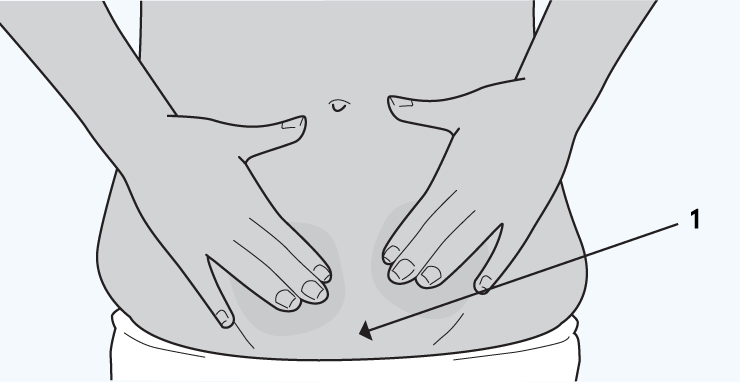
Illustration key:
- Pubic bone
Heat therapy
You can put a hot water bottle, wheat bag or heat pack where the pain is.
- Do not apply heat directly to your skin.
- Always follow the product instructions.

Medication
You will be provided with pain medication for moderate or strong pain.
Follow the directions on the packaging and do not take more than instructed.
After your medical abortion

Reducing infection risk
To reduce the chances of infection, do not insert anything into your vagina for 1 week.
- This includes tampons, menstrual cups, fingers, or having vaginal intercourse.
- If you intend to use the vaginal ring or a diaphragm for contraception, please discuss this with the doctor at your appointment.
Possible signs of infection
These symptoms are not common and could mean you have an infection. If you experience any of these symptoms more than 24 hours after Step 2, call us on 1300 888 022.
- Fever
- Feeling tired, rundown or flu-like symptoms
- ongoing abdominal (lower tummy) pain
- Unusual vaginal discharge
Pregnancy symptoms
If you had nausea (feeling sick) before your treatment, it will probably get better within 24 hours of completing the treatment.
- Breast fullness or tenderness can last for 1 to 2 weeks. Do not squeeze or massage your breasts.
- A pregnancy test will often remain positive for 2 weeks and sometimes up to 1 month after a medical abortion.
Call us on 1300 888 022 if you are concerned about continuing pregnancy symptoms.
Menstruation
You should get your first menstrual period 4 to 8 weeks after your treatment; however some contraceptive methods may change this.
Call us on 1300 888 022 if your period has not come in this time.

Exercise
As soon as you feel well enough, you can do your normal activities and exercise.

Returning to work
You may be able to have a medical abortion without any, or little, interruption to work.
You need to be resting at home for Step 2, until cramping and bleeding have reduced.
- If you have a physically demanding job, you may want to take some time off.
- When you feel better you can go back to work.
- Remember to ask for a medical certificate during your appointment. Your support person can also ask for a medical certificate.
Follow up
Follow up 2-3 weeks after your appointment is essential to make sure the abortion has worked.
- You will be given a special urine pregnancy test to use at home no earlier than 14 days after you have completed Step 1. You will also complete a self-assessment to ensure that the abortion has been successful and there are no complications. You have been provided with an instruction sheet to help with this.
- If you need to be seen in the clinic for any reason, we will make an appointment for you.
Do not travel overseas until you have confirmed your treatment is complete.
Do not travel overseas until you have confirmed your treatment is complete.
Medical risks
Medical abortion is very safe, but like any medical treatment, has some risks. These risks do not include all complications, but are the most common or serious.

Retained pregnancy tissue or clot
Occurring in up to 4 in 100 people
What is it: A small amount of tissue may stay in the uterus, or blood may collect and form a clot. This can cause heavy and/or long lasting bleeding and/or pain.
Action/treatment: May require more tablets or a surgical procedure. You will not have to pay for this if treated in one of our clinics.
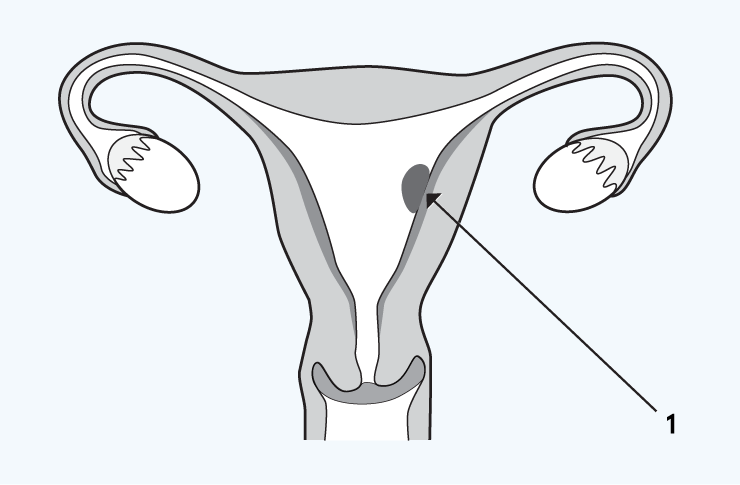
Illustration key:
- Retained clot or pregnancy

Continuing pregnancy
Occurring in 1 in 100 people
What is it: The pregnancy remains and may continue to grow.
Action/treatment: May need a repeat medical abortion or a surgical procedure. You will not have to pay for this if treated in one of our clinics.
If you have a continuing pregnancy and decide to keep the pregnancy, the medication may have damaged the fetus.
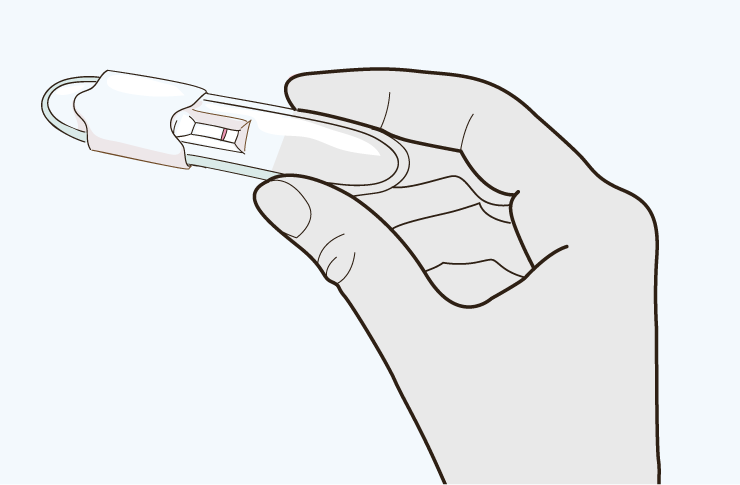
Illustration:
Continuing pregnancy

Infection
Occurring in less than 1 in 100 people
What is it: When bacteria enters the body and can cause disease. This is uncommon and serious infection from abortion is rare.
Action/treatment: We will test you for infections and we will give you antibiotics to reduce the risk of infection.

Illustration:
Infection

Haemorrhage
1 to 2 in 100 people needing surgery
1 to 2 in 1,000 people needing a blood transfusion
What is it: Excessive or prolonged bleeding
Action/treatment: You may need further surgery, intravenous fluids or a blood transfusion at a local hospital.
For further information on chance of side effects, please see our website for the recent complication rates from our clinics.
Effect on future pregnancies
An uncomplicated medical abortion will not affect your chance of becoming pregnant in the future.
Emotional effects
Everyone has different feelings about their own treatment. There is no right or wrong way to feel after your abortion. If at any time you would like to talk to someone, we provide free counselling services. Simply call us on 1300 003 707 to make a booking.
If the pregnancy was a result of sexual, family or domestic violence, you can also call 1800 Respect. They offer 24/7 information, counselling and support at 1800 737 732 or you can chat online at 1800respect.org.au.
Contraception and aftercare
We will give you information about your contraception options.
Contraception options
Within just 2 weeks of your treatment, your body can release an egg; so it’s possible to fall pregnant again before your next period. This is why we strongly suggest starting contraception as soon as possible if you don’t want to become pregnant. Please take the time to look at our contraception brochure. Ask your doctor for fact sheets on any of the contraceptive methods you are interested in.
You can take an online contraception quiz at contraception.org.au
Contraception after your medical abortion
In most cases you can start a contraceptive method immediately. If you have chosen an IUD this can be inserted as soon as we have confirmed your abortion is complete. Speak with your GP or local women’s health centre if you are unable to attend one of our clinics.
- Long-acting reversible contraception (LARC) options (e.g. IUDs, implants, injections) are the most effective at preventing pregnancy.
- You can start contraception such as the contraceptive pill or vaginal ring the day after Step 2 of treatment and these methods will be effective immediately.
No matter which contraception you using, you should not have vaginal intercourse for 1 week after your treatment.
Hormonal IUD
Implant
Copper IUD
Injection
Free aftercare line
Our aftercare phone service connects you to experienced registered nurses, 8am-5pm AEST weekdays.
Call our aftercare nurses on 1300 888 022 if you experience any of the following problems or have any concerns:
- passing clots larger than a tennis ball size
- heavy bleeding that lasts longer than 2 weeks
- soaking a maxi pad every 30 minutes for more than 2 hours
- fever, chills, strong pain or other side effects which continue more than 24 hours after taking Stage 2
- having strong abdominal pain that doesn’t stop
- feeling nauseous more than 1 week after your treatment
- feeling tired or generally unwell
- having sore breasts for 2 weeks after your treatment
- not menstruating as usual, 4-8 weeks after your treatment
- persistent pregnancy symptoms.
Call us IMMEDIATELY if you have possible signs of an infection:
- fever
- feeling generally unwell (flu like symptoms)
- ongoing abdominal pain
- unusual vaginal discharge.
Your Healthcare Rights
MSI Australia adopts the Australian Charter of Healthcare Rights. The Charter provides a framework of client rights which allows clients, families, carers and services providing health care to work together towards a safe and high quality health system, achieving the best possible outcomes.
The Charter is guided by the following principles:
- Access
- Safety
- Respect
- Partnership
- Information
- Privacy
- Give feedback
As a client of MSI Australia, you have a right to:
- be treated in a professional, courteous, and caring manner
- be respected regardless of your gender, age, sexual orientation, disability, religion, and cultural and linguistic diversity
- have your concerns, complaints and suggestions taken seriously.
If we don't satisfy your concerns, you may also escalate your complaint to the independent body in your State/Territory.
More information about your healthcare rights and the Australian Charter of Healthcare Rights is available on safetyandquality.gov.au. An accessible version of the Charter is also available.
This page last edited: September 2024
Ref: 1721-MSIAU-240920
